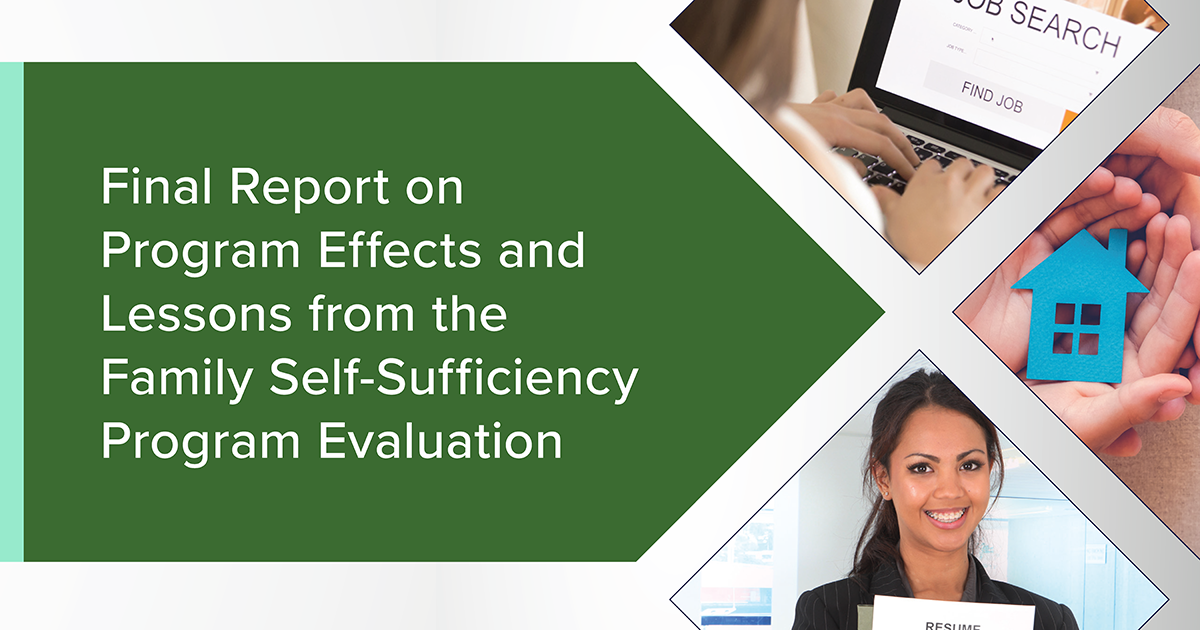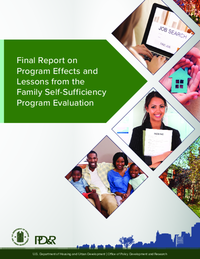Final Report on Program Effects and Lessons from the Family Self-Sufficiency Program Evaluation

The Family Self-Sufficiency (FSS) program, established in 1990, aims to help families receiving assistance from the U.S. Department of Housing and Urban Development (HUD) gain economic opportunities and achieve self-sufficiency. HUD provides grants to public housing agencies (PHAs) and owners of private Project-Based Rental Assistance programs to fund the salaries of FSS program coordinators. These coordinators work with participants to connect them with educational and training opportunities, improve their financial literacy, increase their earnings, and work toward goals they set themselves. Additionally, FSS participants have the opportunity to increase their savings through an escrow account managed by the FSS coordinator. When participants' incomes increase, the corresponding rent increase is deposited into this account. Upon successfully achieving their goals and graduating from the program, participants gain access to their accrued savings.
In 2012, HUD commissioned an evaluation of the FSS program to measure its impact on families' progress toward long-term financial stability. Study participants were randomly placed into one of two groups: one offered a placement in FSS and one not. This method allows for an accurate estimation of the program's impact by ensuring the groups were identical at the start of the study except for the FSS placement offer. This report is the fourth and final in a series sharing the findings of the impact evaluation, summarizing six to seven years of follow-up data collection.
There was significant variation in program implementation across locations, leading to differences in participant outcomes. For example, graduation rates ranged from an average of 38 percent among the top three housing agencies to 9 percent among the lowest three, with a median rate of 24.5 percent.
Overall, the evaluation found equal levels of success between those offered a placement in FSS and those not. Both groups had similar earnings and employment outcomes over the follow-up period, with no significant differences in other financial well-being measures such as credit score or credit use. However, participants with a two-year degree or higher saw positive impacts from the program, including higher graduation rates and improved credit and employment outcomes compared with their control group counterparts. This result suggests that participants facing lower barriers to employment and economic self-sufficiency were more likely to benefit from the program.
An additional finding is that large percentages of both groups used self-sufficiency-related services, with financial counseling being the most common. This high rate of service use could mask the impacts of FSS, as both groups may have seen benefits from these services. The evaluation also took place during a period of economic expansion, which may have reduced the program's potential impact due to greater employment access for both groups.
Participants who graduated from FSS received substantial benefits, particularly through access to their escrow savings. About 60 percent of FSS participants accrued savings in their escrow accounts, with an average disbursement of $10,803 for graduates. These funds allowed families to pursue higher education, pay off debt, or buy a home, or they could use the money for other purposes. However, low graduation rates meant many families could not receive their accumulated escrow, forfeiting an average balance of $3,900. These findings highlight the importance of structuring the program to make it more feasible for families to graduate and receive their savings.







